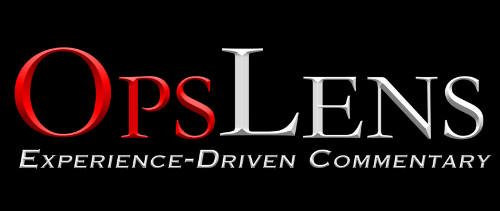Monday the Ukrainian parliament voted, at its president’s suggestion, to impose martial law in the country for thirty days in response to provocative Russian naval actions near the Kerch Strait. The strait is the only outlet for Ukrainian ships to pass into the Black Sea. Three ships were taken and six sailors wounded by the Russian coast guard.
That’s the situation on the ground, or in the water, as NATO is reminded once again that in the region the Russians do not act far differently than the Soviets. Combined with the Russian staffed, led, and supplied insurgent movement in East Ukraine, this is another incident in the long Russian campaign to destabilize Ukraine and keep her out of the Western sphere of influence.
For some of us, this is ironic.
Those of us who worked Soviet intel in the 80s were told in the early 90s we were dinosaurs. Our war, the Cold War, had come and gone and the old Soviets were the new Russians under Yeltsin and our pals. Francis Fukuyama was supposedly right and we were remnants of an obsolete mode of thinking.
We answered that the Soviets had never stopped being Russian. Russian history told us that. And just because the Bolsheviks were out as an idea did not mean their people were going to disappear or that they were going to roll over and play dead for long to make life easier for Citibank and McDonald’s. Nahhh, the bright boys said, we were dunsels, paranoids.
But guess what?
Today, and for a while, a KGB light colonel has been the head of Russia and she continues to seek what the czars, the communists, and Czar Vlad still seek: regional hegemony. That is not good news for Ukraine. But then, it never has been.
The Soviets brutalized the country and forcibly collectivized its farms not long after they took the place in 1917. But the people fought back, oftentimes destroying their goods rather than give them to the commissars. Stalin would have none of it and in a move we have seen since, as in Ethiopia in the 1980s, he used food as a weapon of political repression. In the Forced Famine of 1932-33 six to seven million Ukrainians died as Stalin starved them to force their political subjugation. They were eventually beaten. But they did not forget.
When Ukrainian Nikita Khrushchev became Soviet dictator after Stalin’s death in 1953 (The Death of Stalin, by the way, is the funniest movie in years) he softened the grip a bit, even going so far as trashing Stalin in a closed session of the Twentieth Congress of the Communist Party of the Soviet Union in 1956. His speech The Personality Cult and its Consequences (a general subject we have mentioned in this column as of late) admitted to many of Stalin’s crimes, including the forced famine. Though a closed session, obviously meant to leak, we got hold of a transcript courtesy of the Mossad.
That speech did not sit well with hardline Soviets who preferred not to dwell on the excesses of their formerly beloved leader. When Brezhnev topped Khrushchev in 1964, attitudes returned to Stalinist expansionism and captive nations like Ukraine now knew there would be a price for not towing the line. Hungary found this out in 1956 with Russia even under Khrushchev; so did Czechoslovakia in 1968 with Russia under Brezhnev. Though not at that stage yet, with constant Russian intervention in their internal affairs, the insurgency in the east and now this, Ukraine is on the same road.
One problem for Vlad, though. The Hungary and Czechoslovakia operations were conducted under the umbrella of the Warsaw Pact. It no longer exists, as we, not they, won the Cold War. Former Pact members like Poland, the Czechs, Hungary, Bulgaria, Romania, the Slovaks, and Albania now all belong to NATO. As expertly as Vlad plays his deuces like queens, he is still a paper tiger outside of his backyard. Beating up on little Georgia and browbeating Ukraine aren’t exactly Alexandrine triumphs for the Russians. Though there is a call for it in the nation, Ukraine has not yet joined NATO. For the old Sovs, to have not just a Warsaw Pact ally, but actually a former part of the USSR, join NATO may be something they cannot countenance. Not because of a threat, but because Russians would rather digest broken glass than lose face once again to those who beat them soundly in the Cold War.
So, if the Russians push this what does NATO and America do?
For starters, we accelerate the stationing and redeployment of NATO troops and material east and out of Germany. The recent Hun cold shoulder should remind us of how today’s Germany feels about us. The president has rightfully made known the German refusal to bear their fair share in their own defense. Eastern European NATO members have made strides in meeting the two percent GDP spending mark and have offered not only to host forces, but to subsidize a NATO and American troop presence. We should take them up on it.
The Russian proximity to the Baltic states of Estonia, Latvia, and Lithuania, all NATO nations, should give us unease. Troop deployments there as well —a couple of tripwire battalions should do nicely— might give the Russians second thoughts on any gamble towards adventurism. The 11th and 2nd ACRs come to mind.
If Russia moves, historical punk that she is, it will be against a non-NATO nation like Ukraine. That is why this crisis could get sporty very quickly. NATO and President Trump have sent unequivocal signals to Moscow that this isn’t the Rhineland in 1936 and she will not be allowed to waltz into what was once hers.
These days, the West is made of sterner stuff.
















